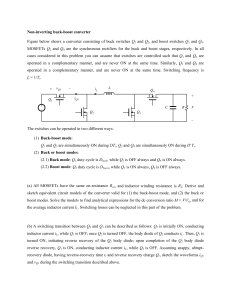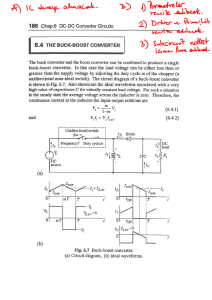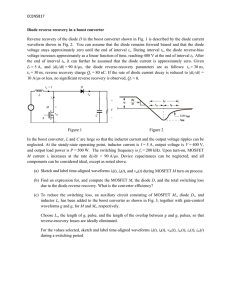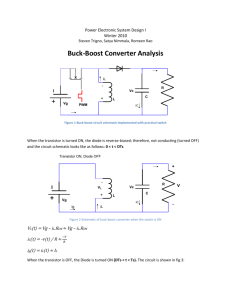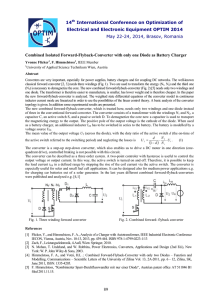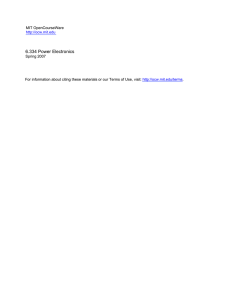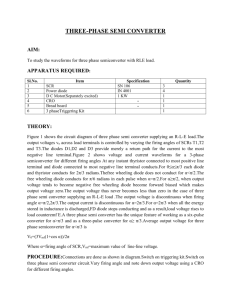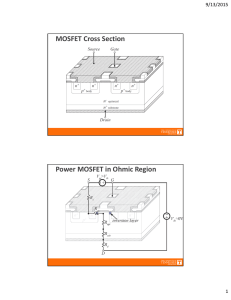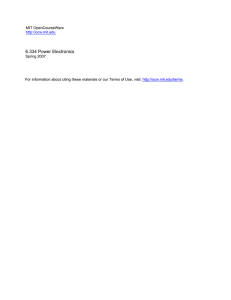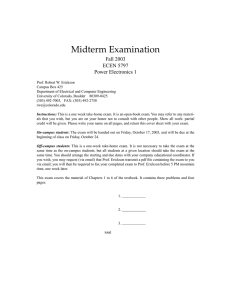Additional Problems on Switching Loss Introduction to Power Electronics Fall 2004
advertisement
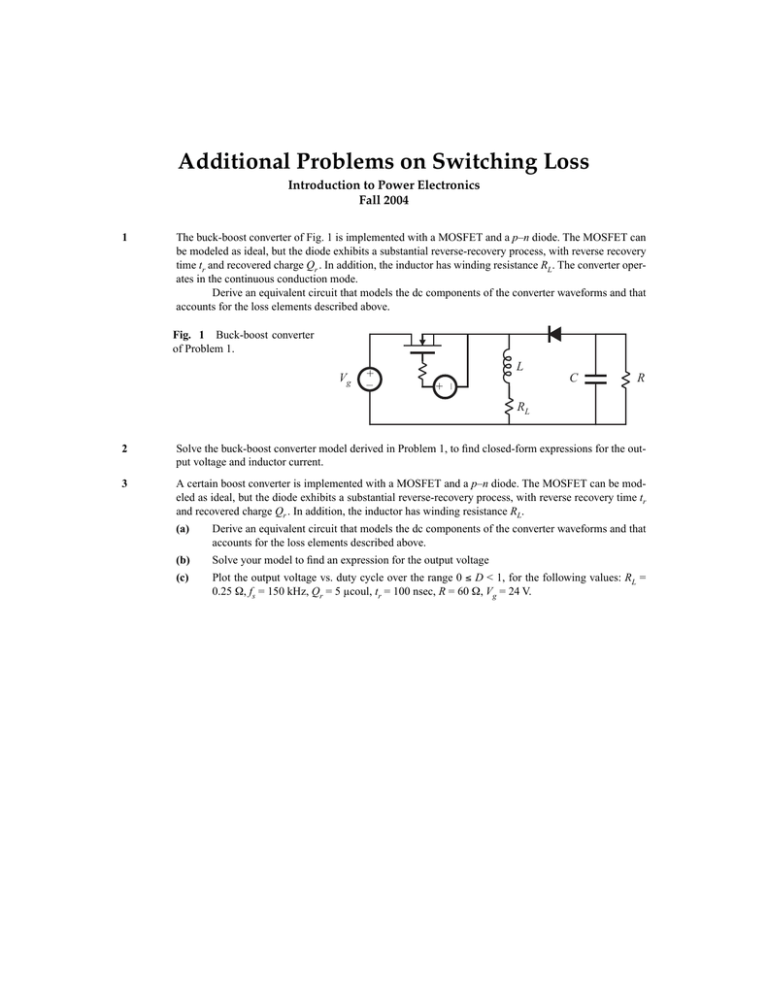
Additional Problems on Switching Loss Introduction to Power Electronics Fall 2004 1 The buck-boost converter of Fig. 1 is implemented with a MOSFET and a p–n diode. The MOSFET can be modeled as ideal, but the diode exhibits a substantial reverse-recovery process, with reverse recovery time tr and recovered charge Qr . In addition, the inductor has winding resistance RL. The converter operates in the continuous conduction mode. Derive an equivalent circuit that models the dc components of the converter waveforms and that accounts for the loss elements described above. Fig. 1 Buck-boost converter of Problem 1. + – L + – Vg C R RL 2 Solve the buck-boost converter model derived in Problem 1, to find closed-form expressions for the output voltage and inductor current. 3 A certain boost converter is implemented with a MOSFET and a p–n diode. The MOSFET can be modeled as ideal, but the diode exhibits a substantial reverse-recovery process, with reverse recovery time tr and recovered charge Qr . In addition, the inductor has winding resistance RL. (a) Derive an equivalent circuit that models the dc components of the converter waveforms and that accounts for the loss elements described above. (b) Solve your model to find an expression for the output voltage (c) Plot the output voltage vs. duty cycle over the range 0 ≤ D < 1, for the following values: RL = 0.25 Ω, fs = 150 kHz, Qr = 5 µcoul, tr = 100 nsec, R = 60 Ω, Vg = 24 V.
